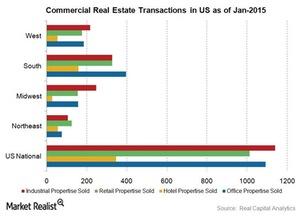Why Public PE Firms Are an Attractive Investment
In the world of asset allocation, there are three forms of publicly traded private equity business firms.
May 21 2015, Updated 9:06 a.m. ET

Public PE firms as an asset class
In the world of asset allocation, there are three forms of publicly traded private equity business firms. The first are those that handle private equity funds and collect management and performance fees. The second class consists of firms that simply invest their own capital in private companies. The third class is comprised of firms that make debt and equity investments in private equity deals.
A few examples of publicly traded private equity firms include Kohlberg Kravis Roberts & Co. (KKR), the Blackstone Group (BX), Oaktree Capital Group (OAK), American Capital (ACAS), Main Street Capital, Gladstone Capital (MAIN), and Prospect Capital (PSEC).
Advantages of investing in a publicly traded PE firm
- Public PE shares offer investors liquidity and can be bought and sold at any time with no minimum size of investment or lock-up.
- PE firms must comply with strict reporting demands and corporate governance conventions, which means they can be more investor-friendly than their unlisted counterparts.
- PE firms do not have a minimum investment requisite. LPE shares are accessible to minor investors and they do not have restrictions on selling the investment.
- The PE sector is diverse, offering a wide range of private equity investment, as each listed fund manager has different investment strategies and criteria.
Disadvantages of investing in a publicly traded PE firm
- Listed private equity firms can use debt to finance the portfolio, which can increase returns, while potentially increasing downside risk.
- Listed private equity is best suited to long-term holding, not frequent trading.
- Shares in listed private equity companies usually trade at a discount or premium to their net asset value (or NAV). Shares can trade at a discount to NAV for long periods, especially when stock market sentiment is depressed or subdued.
Some of the liquid real estate stocks and ETFs are CBL & Associates Properties (CBL), the iShares US Real Estate ETF (IYR), Toll Brothers (TOL), Retail Opportunity Investments (ROIC), and Forest City Enterprises (FCE.A).
